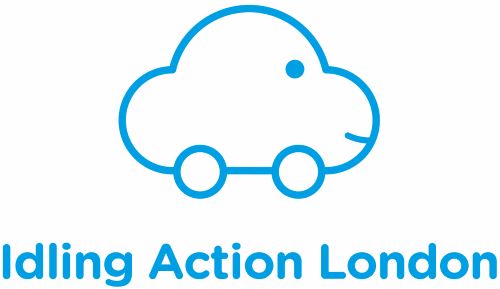For some people with disabilities, there have been some positives from the Covid-19 pandemic.
Opinion
Disability awareness: a positive from the pandemic?
In order for businesses and services to continue, many employers had to make provision for employees to work from home at very little notice, and one unintended consequence of this rapid transition to home working proved immensely beneficial for many disabled workers. It meant that, for many disabled employees, rather than having to apply for flexible working arrangements – including home working – working from home became the new normal.
For many disabled workers, home working has been a great enabler. For example, if a person’s disability means they sometimes have periods where their health makes it physically difficult or impossible to travel to their workplace, they can continue to work from home rather than having to take sick leave. This is a great opportunity to ensure employee satisfaction rather than employee frustration.
The growth of home working means disabled workers can now more easily continue to work (and, in some cases, access employment), after previously struggling to overcome the physical and mental barriers to attending the workplace.
And with businesses increasingly adopting more flexible, hybrid working models, the benefits of home working for disabled (and other) workers seem likely to be preserved.
Ableist barriers
However, there are still a huge number of ableist barriers that people with disabilities have to navigate every day. As one member of my Twitter network of disability activists said – the biggest barrier faced by people with disabilities is not their disability; it’s the ableism they have to deal with on a daily basis.
As someone with two non-visible health conditions which developed in my twenties, this is a statement that chimes with me and no doubt many others with disabilities. Before turning to the issue of workplace accommodations, or ‘reasonable adjustments’, to enable disabled people to both access work and thrive in employment (as required by the Equality Act 2010), let’s imagine a typical morning in a typical office for someone with a condition that affects them both physically and mentally and count the barriers.
 Some barriers are obvious – such as accessing the building, using the stairs and planning how to evacuate people with limited mobility. Photograph: iStock
Some barriers are obvious – such as accessing the building, using the stairs and planning how to evacuate people with limited mobility. Photograph: iStock
Before the person even gets to the workplace, there’s the train ride in, and that’s potentially barrier number one. The lift in the station is broken (again), so the stairs have to be navigated, an exhausting activity which brings a huge rush of symptoms (2). You get to the office and there are more stairs (3) and to access your desk you have to open big heavy doors (4). You need to get a ‘thinking’ job done first thing, so you settle down to do it. However, you’re distracted by everyone getting to their desks because it’s an open plan office (5) and your desk is near the communal areas which are noisy – which again makes it harder to concentrate (6).
You go to an online meeting or training session delivered to a group of staff via a screen but struggle to follow much of the presentation as it’s difficult to hear or see who is speaking because the screen is small and you cannot see it clearly from your seat (7). You usually try to overcome these difficulties by asking for notes in advance so you can read them and then try to pick up what you can at the meeting, but this involves work and pre-planning by you and the trainer or meeting organiser (8). At lunchtime, you’re lucky to have a nice restaurant at work, but because of the layout, you have to stand in a queue for 10 minutes which brings another rush of symptoms (9). That’s at least nine barriers already and the afternoon is yet to come. Tiring isn’t it?
The physical barriers while commuting and in the office are many and varied, but society is slowly getting to grips with them, because they’re easier to understand. Sometimes they are immutable but often changes and workarounds can be made that are simple and inexpensive.
However, perhaps the real challenge is getting society and employers to remove and reduce the barriers faced by those with non-visible conditions, such as sight or hearing loss, ME (chronic fatigue syndrome), diabetes, Ehlers-Danlos syndromes, postural orthostatic tachycardia syndrome, anxiety, depression and long Covid. These conditions can be just as debilitating as the more ‘immediately obvious-to-the-eye’ physical conditions and disabilities.
There’s also a huge amount of work to be done in getting employers and society in general to understand that a significant number of individuals with physical disabilities also have to cope with and manage mental health challenges on a day-to-day basis. A good example of this is long Covid, which can cause symptoms of mental ill health, such as insomnia and anxiety, as well as symptoms of physical illness, like fatigue and dizziness. The UK government estimated in June 2021 that two million people may have had long Covid, so it’s likely that some of an organisation’s workforce will have it. Therefore, employers need to be ready to support staff who are suffering from it.
Supporting staff with long Covid
As with many health conditions, long Covid throws up a challenging mix
of physical symptoms. The most common are chronic fatigue, shortness of breath, loss of smell and difficulty concentrating. Several of these can affect the person’s ability to work and perform well and are not manifestly apparent to others. Employers can (and should) support staff by checking to see how they are recovering and whether they need support in returning to work – such as adjustments to their working pattern or role. If the company has an occupational health team, they should be consulted on the best approach to support the worker to remain in work or gradually return, where appropriate.
It can be tempting to think of barriers in terms of the physical barriers that impact on a disabled person’s ability to do their job but the issue is often far more wide ranging. That is why a dialogue with the individual employee is so vital.
One of the barriers that employers and managers often fail to consider are working practices. These are generally ways of doing things that are so normal to able people that they don’t even register as presenting a disadvantage to a disabled person. These barriers can have a really detrimental impact on disabled employees by preventing or restricting their ability to access work and services, and have a negative effect on their everyday experiences.
So how can an employer start to think about possible barriers at work that could affect employees with different disabilities? Some barriers are obvious – such as accessing the building, using the stairs and planning how to evacuate people with limited mobility.
However, it can be difficult for someone who is able-bodied to imagine where the barriers are for people with non-visible conditions, such as sight or hearing impairments, ME, diabetes, Ehlers-Danlos, anxiety, depression and long Covid. The best thing is to ask the individual. So, if you’re planning on changing something or introducing a new policy or way of working, ask employees if it would cause them any issues (whether they have disclosed a disability or not). This will enable you to work together to remove or minimise the barriers.
Under UK equality law, employers have a duty to make reasonable adjustments for all disabilities. Section 20 of the Equality Act 2010 states: “Where a provision, criteria or practice of [the employer] puts a disabled person at a substantial disadvantage in relation to a relevant matter in comparison to persons who are not disabled, [the employer is required to] take such steps as it is reasonable to have to take to avoid the disadvantage.”
So, how can employers ensure they are complying with this duty? A simple approach is to factor in an ‘ableist’ check each time a new policy is rolled out, there are changes to how work is done, changes to systems or laptops, or plans for a party, a client event, an away day or a training session, for instance.
Consult staff where you can (particularly through a staff disability or wellbeing network if there is one at your company), to understand how potential changes could negatively (or positively) affect someone with a disability. You will then be much better placed to adjust the changes, put in place support (such as extra training or time to get used to new systems or ways of working, mentoring or one-on-one support) for disabled employees who require it, to ensure they are not placed at a disadvantage at work.
Finally, employers also need to remember that the day-to-day mental demands of having a disability can be heavy. The continual process of taking medication and risk assessing what are normal journeys and tasks for able people can use up a lot of energy. So employers need to factor this in, and remove any barriers that may be stopping disabled people from living a good life and being able to work.
Contact Gowling WLG law firm at: gowlingwlg.com
Vivienne Reeve is Principal associate, Employment and Equalities Team at Gowling WLG law firm
OPINION

ISO mental health standard needs a multi-disciplinary approach
By Phil Newton, Pinsent Masons LLP on 01 April 2022

Why your business should act on engine idling
By Jack Alexander, project officer, Idling Action London on 01 October 2021

The air we breathe is all our business
By Nicky O’Malley, director of corporate partnerships, Global Action Plan on 01 June 2023
Businesses have a vital role to play in improving air quality – and the UK’s Clean Air Day on 15 June is a great opportunity for companies to begin or renew their efforts in this area.



